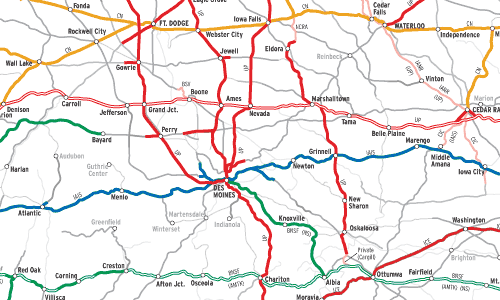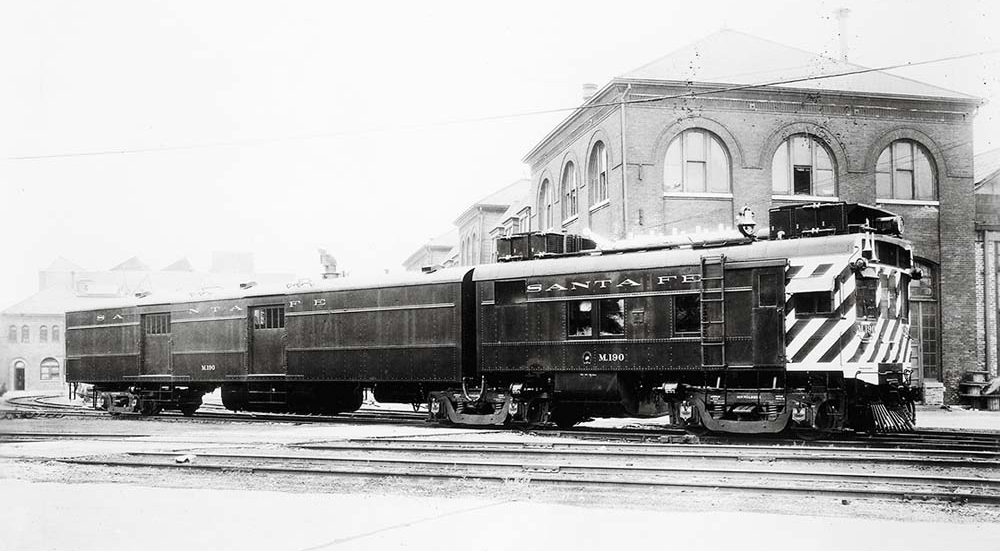Iowa has been the poster-child state for the overbuilding of railways in the era before paved roads. In his “Iowa: Half Its Trains Don’t Go There Anymore” [April 1986 Trains], author Charles Bohi said Hawkeye State kids were taught “there is no point in Iowa more than 12 miles from a railroad” (a day’s drive by horse and wagon). From 1911 to 1985, the state’s rail mileage went from 10,000 to 5,000.
All of Iowa’s 99 counties (each about the same size, in nine “tiers”) had railroads. Today, 90 do; five of the nine without them are in the southernmost tier. The interior rivers of IOwa, and the Missouri and Mississippi that frame it, generally flow northwest to southeast. The railroad trunk lines, on the other hand, followed the east-west commerce of the developing nation.
For most of the 20th century, six Class Is vied for traffic between the Union Pacific at Council Bluffs/Omaha and Chicago: Illinois Central, Chicago Great Western, Chicago & North Western, Milwaukee, Rock Island, and Burlington. A seventh, Wabash, had a line to St. Louis. Examining the abandoned lines on this Iowa DOT map, differentiated by time period, reveals a correlation between the relative status quo of the regulated era and post-1980 deregulation. With “de-reg” came the big-merger movement and related Class I sell-offs to big regionals, of which Iowa has had three with significant mileage:
- Iowa Interstate, which has the cross-state Rock Island main, was formed by shippers (led by Maytag in Newton) and the state;
- today’s Canadian National lines were sold in 1985 by Illinois Central to the new Chicago Central & Pacific, which IC re-purchased in 1996 (CN acquired IC in 1999);
- Iowa, Chicago & Eastern operates ex-Milwaukee trackage sold off in 1997 by MILW successor Soo Line.
CGW was absorbed by C&NW in 1968 and largely abandoned, as was much of Milwaukee’s main line across central Iowa. UP absorbed C&NW in 1996. Wabash successor Norfolk Southern has a token IOwa presence, to Des Moines.
An exception to the branch-line-abandonment habit has been C&NW’s, and now UP’s, continued success with the old Rock Island “Bow & Arrow Company” branch network, based at Eagle Grove.
Railroads included in this map:
Amtrak; Appanoose County Community; BNSF Railway; Boone & Scenic Valley; Burlington Junction; Canadian National; Cedar Rapids & Iowa City; Cedar River; D&I Railroad; Dakota, Minnesota & Eastern; Iowa, Chicago & Eastern; Iowa Interstate; Iowa Northern; Iowa Northwestern; Iowa Traction; Keokuk Junction; Nebraska Northeastern; Norfolk Southern; North Central Railway Association; Union Pacific















Sad but ultimately necessary from a business point-of-view. So many small towns and settlements disappeared with the abandonment of their access point to and from the rest of the world.